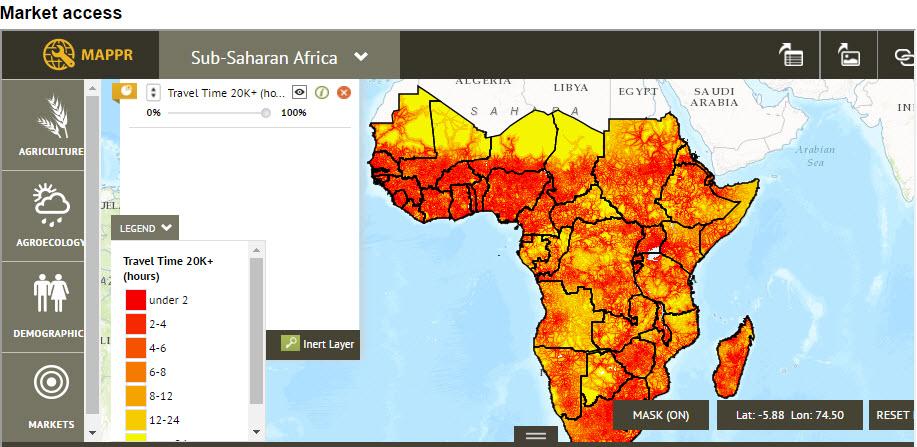Rural Roads Can Bring Increased Access to Markets, Higher Incomes

One of the first steps in increasing smallholder farmers’ market access is ensuring that rural areas have adequate transportation infrastructure to physically move crops from farms to markets. Improved rural roads can reduce transportation costs and the cost of agricultural inputs, thus increasing agricultural productivity; roads can also help integrate producers into more lucrative national and regional markets, leading to greater trade and reducing price shocks caused by local conditions.
However, as a new paper in the Journal of Development Studies points out, there remains some question regarding just how cost effective investments in rural feeder roads are in Africa south of the Sahara. Agricultural productivity and commercial surpluses remain low in rural areas of SSA, as does use of existing rural roads and access to motorized transportation.
To help determine to what extent rural feeder roads improve rural productivity and incomes, the paper looks at households’ willingness to pay for feeder roads in rural Ethiopia in order to estimate the benefits stemming from access to such roads. Since it is difficult to determine causation in this case (do roads create higher prosperity or are roads typically built to more prosperous areas to begin with?), the authors conducted household surveys in Alefa Woreda, a relatively homogeneous region of northwestern Ethiopia with no existing roads; thus, the differences in transportation costs in this region arise from geography rather than road placement as there are no roads in the region.
The costs of transportation were estimated using both the cost of donkey rental to take the products to the market and the opportunity cost of the producer’s time (based on the median non-harvest period wage); the roundtrip travel time to Atsedemariam and opportunity costs for that time was used as the measure of remoteness and ranged from 17 Birr/quintal (least remote) to 63 Birr/quintal (most remote), which are 6 to 21 percent (respectively) of the harvest-season sale price of quintal of grains.
Using utility functions to show the average marginal benefit of roads, the paper finds that a hypothetical feeder road in this region would reduce transportation costs for the area’s most remote households by USD 50 per metric ton. This hypothetical gravel road is estimated have a rate of return of between 12 and 35 percent for roads between 7 and 21 kilometers long. In terms of income generation, this road would increase annual income for the most remote households by 3615 Ethiopian Birr (approximately USD 146 currently); average annual income for all households would increase by 2277 Birr (approximately 99 USD). The paper estimates that the majority of this increase (48 percent) comes from higher effective prices for agricultural surplus sold in markets, while 35 percent comes from the lower effective cost of imported goods for consumption.
These rates of return are consistent compared to similar cost-benefit analyses of rehabilitation projects for major “trunk” roads in Ethiopia conducted by the World Bank; these studies found that such rehabilitation projects have a rate of return ranging from 12 to 48 percent. While the two analyses calculate benefits using different methodologies, the similar results suggest that rural feeder roads can be a smart investment, even in remote areas such as Alefa Woreda.
It should be noted that the study finds that demand for transport tonnage drops by almost 50 percent among the most remote households, from over 1100 kg to just over 500 kg; similarly, the purchase of agricultural inputs also decreases for more remote households. Demand for transport tonnage was found to be influenced by households’ landholdings (mainly for transporting agricultural surplus), but the road still remains significant for freight even after controlling for landholdings.
Thus, the authors cautiously conclude that, regardless of the challenges inherent in rural SSA (low productivity and commercial surplus on the part of smallholders and lack of reliable motorized transportation), rural feeder roads can have relatively high rates of return. As a result, the paper recommends that Ethiopia’s current agricultural investment plan should include more of a focus on future rural infrastructure development projects.
Market access, including travel time to the nearest markets, is just one of the latest indicators included on the Africa south of the Sahara Food Security Portal’s homepage map feature . Using geospatial data from the HarvestChoice program, this new interactive map also covers agricultural production and area, average rainfall, climate and soil conditions, demographics, and health and poverty variables for the region.
